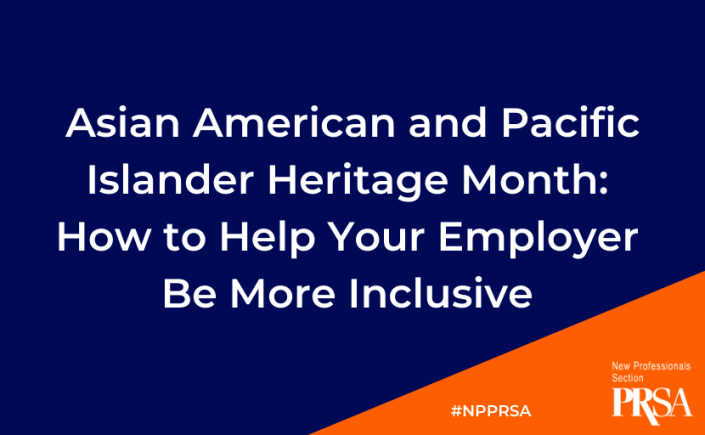As employees demand more inclusive work environments, many businesses are moving into 2021 with a focus on diversity, equity and inclusion (DEI). And while DEI shouldn’t be anything new, it may be for your workplace.
If that’s the case, you’re probably the one leading the DEI conversation. After all, working in PR means it’s your job to represent and protect your business’s reputation and help your employers bridge the gaps they simply haven’t made yet. That includes working with human resources or the larger marketing team to ensure your company priorities and values align with staff concerns to create a safe, welcoming environment that’ll continue attracting top talent.
If your business is taking a little longer to get the DEI ball rolling, here are three ways to begin the conversation during Asian American and Pacific Island (AAPI) Heritage Month.
1. Share the Bigger Picture
Even as the world gets smaller and smaller with live social media updates and 24/7 access to national news, some people simply won’t know where to look to gain an outside perspective. And if their personal bubble is unaffected by larger conflicts taking place out in the world, they may think it’s not worth addressing — to their shareholders, their staff or their customers.
That’s where you (and other PR pros) come in.
It’s your job to give them perspective. You can share a number of resources to support action, including:
- Mainstream news relevant to this event that will get their attention (local coverage, opinion pieces, responses by other businesses)
- Any key performance indicators (KPIs) or metrics that may support a spike in interest by your customers (a related product you sell that’s out of stock, an uptick of pageviews on related articles/press releases on your newsroom site, comments made on recent social media posts)
- PR-specific responses suggested for businesses (helpful webinars, recorded town hall videos or even crisis communications examples of what not to do)
Using AAPI Heritage Month as an example, you’ll want to make sure leadership is aware of the recent shootings in Atlanta. Lead them into a larger conversation about the rise of anti-Asian violence and hate. Bring up the fact that Asian Americans are the fastest-growing ethnic group in the U.S. If you have any Asian Americans on staff, remind your employer. How could this be affecting them, or the larger staff?
Once you’ve got their attention, it’s time to suggest a plan.
2. Introduce an Action Plan
Strategy is key here, mostly because it’s a language your employer will understand. Make sure you pluck the low-hanging fruit:
- Are there any pre-existing company values you can relate a response to?
- What goals do you have that stakeholders are interested in? (This will help get higher leadership on board.)
- Look back at a recent employee survey. Is there any dissatisfaction that DEI could solve and further bolster the argument you’re making?
Talk through any next steps with them. Make sure they’re a part of the process to grow their own involvement and investment.
Using AAPI Heritage Month as the example, this celebration of heritage concerns a lot of different people. Those of Chinese, Indian, Filipino, Vietnamese, Korean, Japanese, Micronesian, Melanesian and Polynesian descent are included in AAPI. Make sure your workplace gets the “inclusion” part of DEI right by considering all involved.
3. Involve Your Employees
Public relations can be a very secretive and tight-knit profession by nature, but DEI is the time to reach out and include the larger staff. Whether you’re holding a company-wide business meeting, sending out a specific survey or conducting one-on-one interviews, their insight is invaluable.
Here’s some DEI-specific information you’ll want to cover in your meetings:
- What does DEI mean for your company? (If you celebrate one month’s ethnicity, will you celebrate the next?)
- How will strategic planning with DEI in mind change your company? (What actual differences can employees, customers and shareholders look for to back up your business’ DEI claims?)
- How else can the company make positive changes in the DEI space? (Ask everyone you can. The most important insight can come from an unlikely place.)
With a few open, honest conversations, these three areas can help your employer properly include DEI in future strategic planning for your workplace. Just remember that this is only the beginning of the conversation; follow-through is imperative to make real change. Luckily, they have you on their PR team.
Has your company recently added DEI to the conversation? Let us know the role you played in the comments below!

